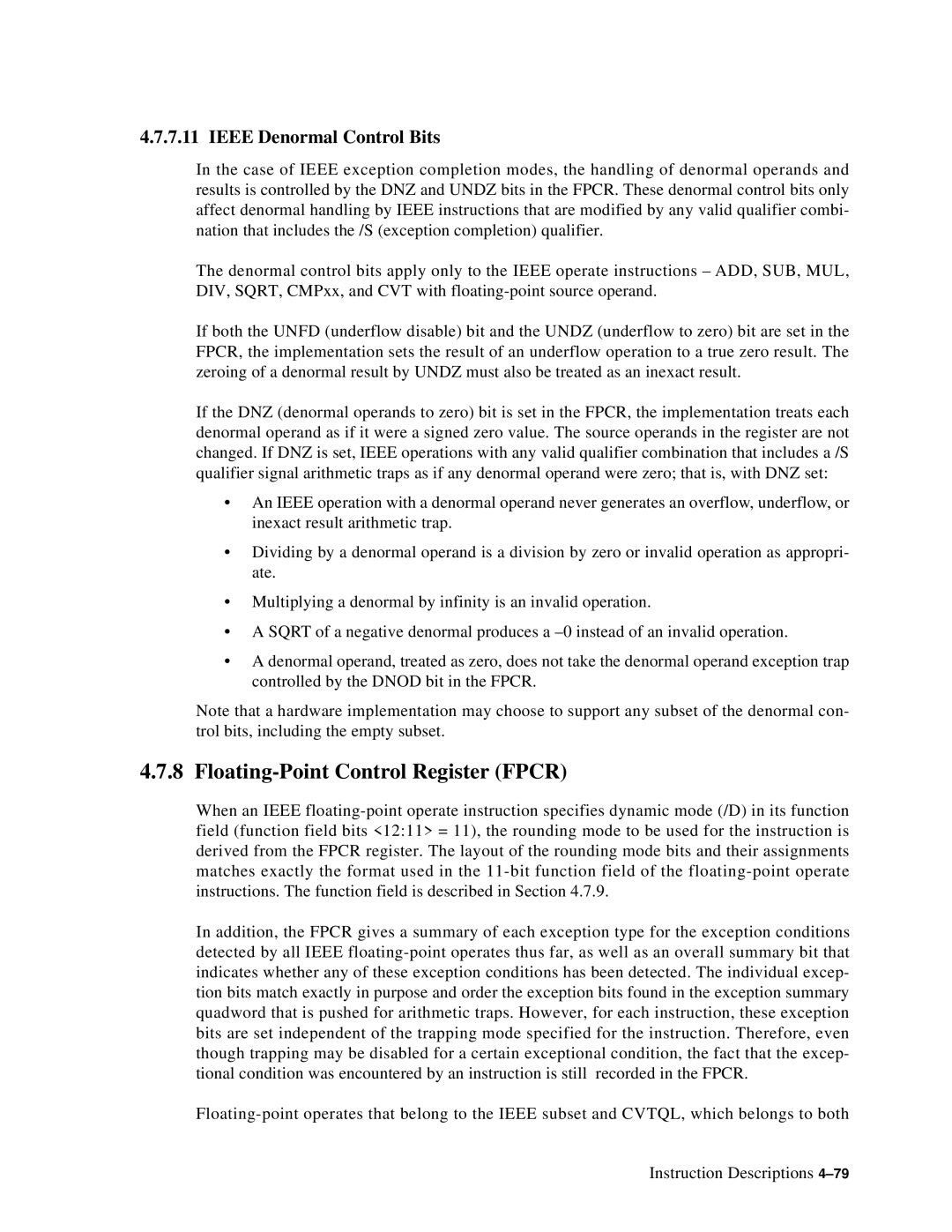4.7.7.11 IEEE Denormal Control Bits
In the case of IEEE exception completion modes, the handling of denormal operands and results is controlled by the DNZ and UNDZ bits in the FPCR. These denormal control bits only affect denormal handling by IEEE instructions that are modified by any valid qualifier combi- nation that includes the /S (exception completion) qualifier.
The denormal control bits apply only to the IEEE operate instructions – ADD, SUB, MUL, DIV, SQRT, CMPxx, and CVT with
If both the UNFD (underflow disable) bit and the UNDZ (underflow to zero) bit are set in the FPCR, the implementation sets the result of an underflow operation to a true zero result. The zeroing of a denormal result by UNDZ must also be treated as an inexact result.
If the DNZ (denormal operands to zero) bit is set in the FPCR, the implementation treats each denormal operand as if it were a signed zero value. The source operands in the register are not changed. If DNZ is set, IEEE operations with any valid qualifier combination that includes a /S qualifier signal arithmetic traps as if any denormal operand were zero; that is, with DNZ set:
•An IEEE operation with a denormal operand never generates an overflow, underflow, or inexact result arithmetic trap.
•Dividing by a denormal operand is a division by zero or invalid operation as appropri- ate.
•Multiplying a denormal by infinity is an invalid operation.
•A SQRT of a negative denormal produces a
•A denormal operand, treated as zero, does not take the denormal operand exception trap controlled by the DNOD bit in the FPCR.
Note that a hardware implementation may choose to support any subset of the denormal con- trol bits, including the empty subset.
4.7.8 Floating-Point Control Register (FPCR)
When an IEEE
In addition, the FPCR gives a summary of each exception type for the exception conditions detected by all IEEE
Instruction Descriptions
